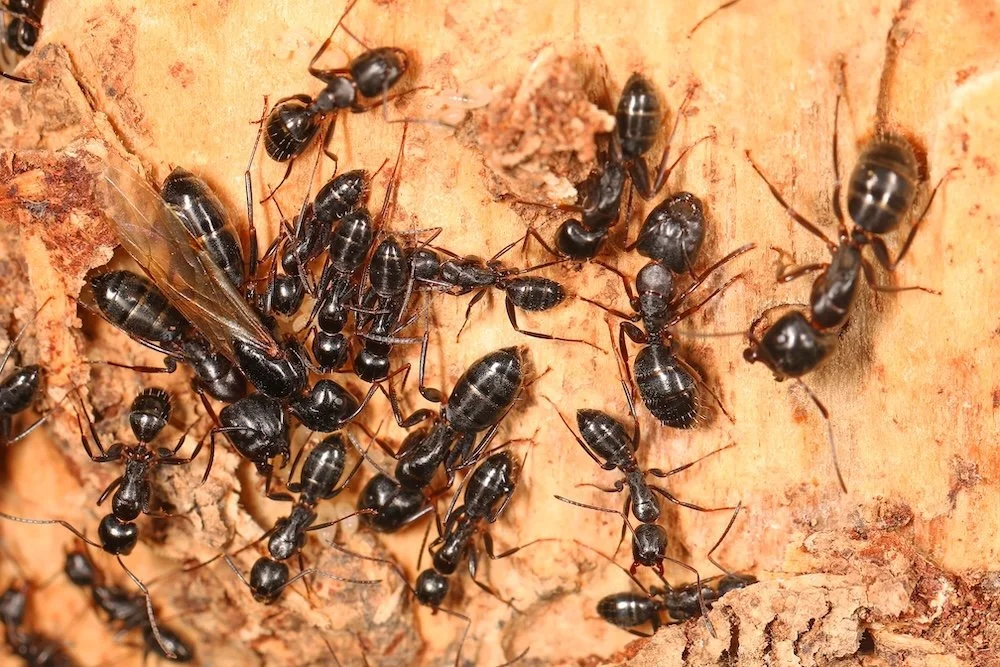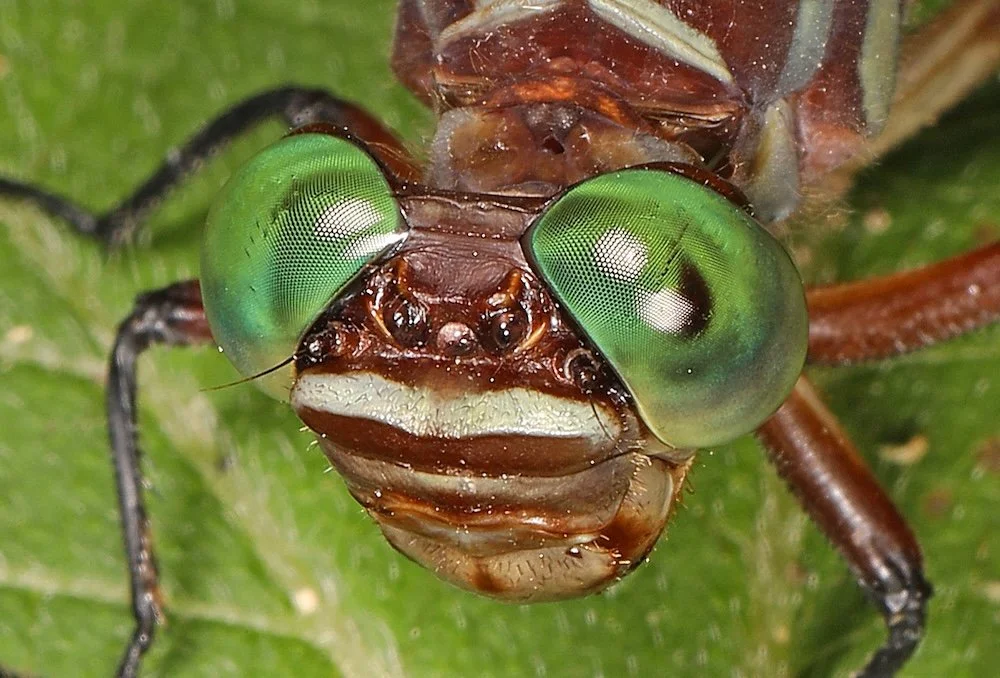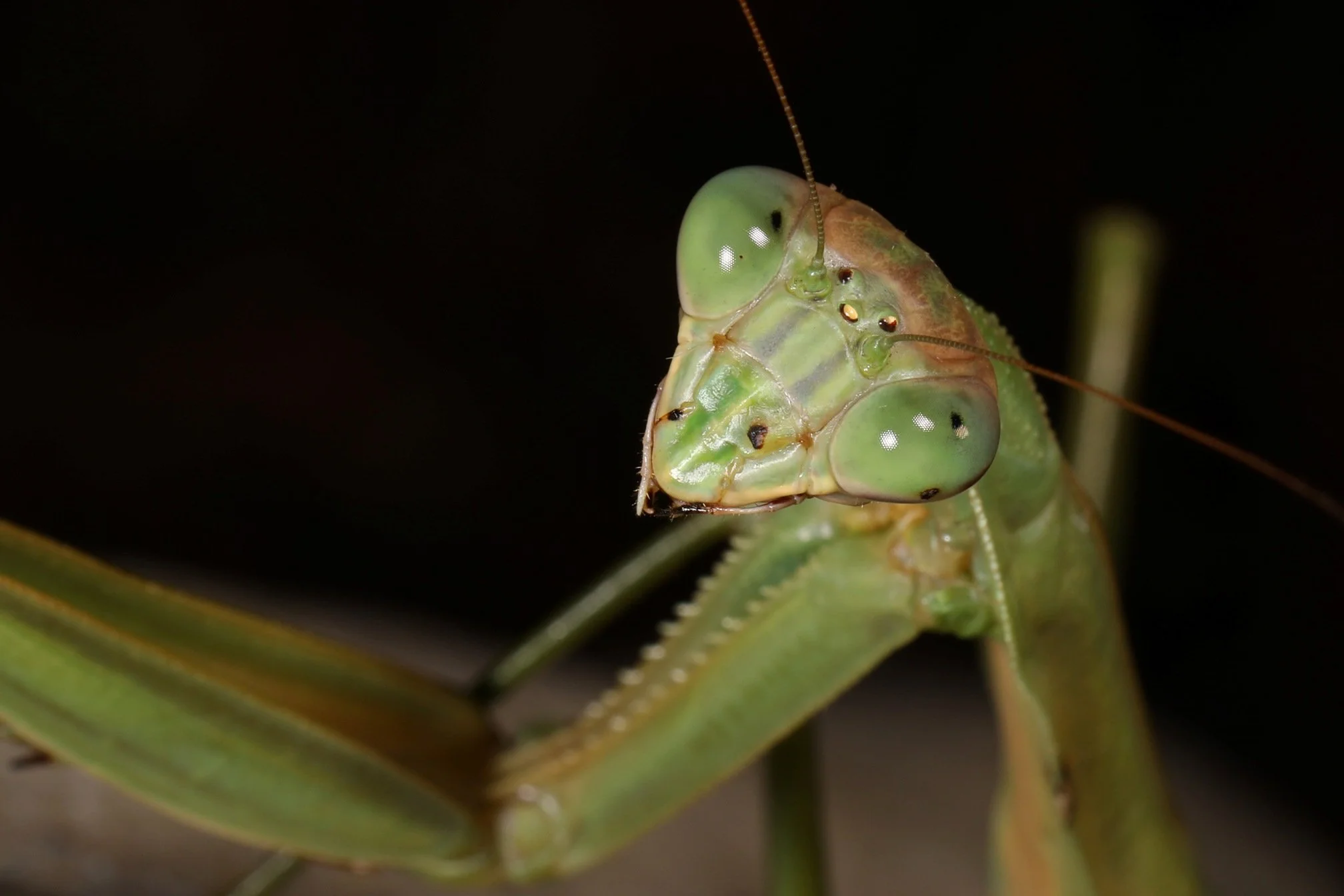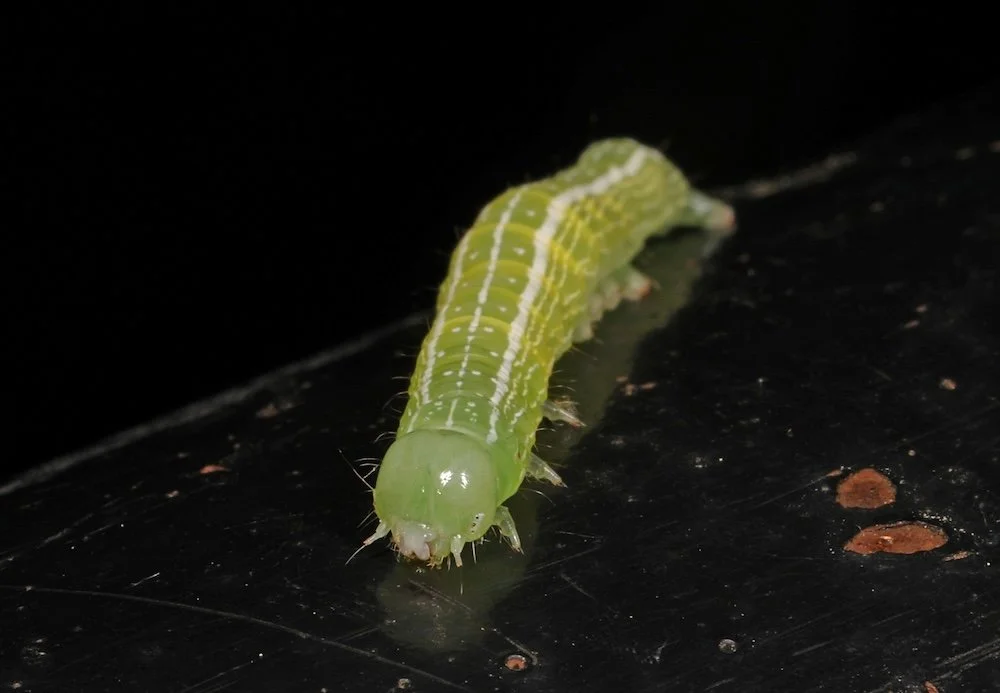Photo: Horse Fly eyes, Judy Gallagher
Judy Gallagher
September 2025
Our eyes determine how we see the world. This is an oversimplification of human vision, but human eyes have a single lens that focuses light onto the retina, which has photoreceptors called rods which help us see in low light and cones that help us see colors. It's easy to assume that other species see things the same way we do, but that is not the case.
Most adult insects have compound eyes, which are made up of many individual lenses called ommatidia that allow them to see a wide field of view and detect movement. The number of individual lenses can vary from 6 in worker ants to more than 25,000 in dragonflies.
Nearctic Carpenter Ants. The worker ants are the ones with the smaller heads. Judy Gallagher
Evolution favors traits that benefit a species in some way. It's possible that visual acuity is not that important to worker ants who stay close to the colony and use other senses like smell and touch.
Russet-tipped Clubtail dragonfly, Judy Gallagher
Dragonflies, on the other hand, need good vision. They have a greater number of light-sensitive proteins in their eyes than we do and likely have great color vision. Their range of view is almost 360 degrees and they can see up to 200 images per second, enabling them to track motion easily. They are aerial predators, catching all their prey in flight. Their excellent vision and flight prowess are responsible for them catching up to 95% of the prey they target.
There are two basic types of compound eyes. Apposition compound eyes produce multiple images, one for each ommatidium. The vision is likely not as sharp as our single-lens eyes, but movement is tracked more easily.
Black Witch Moths, with their light-sensitive superposition eyes shining, Judy Gallagher
Most nocturnal insects have superposition compound eyes, which form a single image. This allows increased light sensitivity, but it's at the expense of resolution.
Many insects can distinguish between polarized light (coming directly from the sun) and unpolarized light. That enables them to detect the sun’s position and use it as an orientation cue even when the sun is obscured by clouds. Many insects can “see” light in the ultraviolet range. But they often can't see red. Bees and butterflies have good color vision, but many insects don't.
Western Honey Bee with pollen on its hairy eyeballs, Judy Gallagher
Speaking of bees, Western Honey Bees have hairy compound eyes, which allows them to capture pollen there when the bee is foraging.
Chinese Mantis, Judy Gallagher
Some insects like the Praying Mantis have good vision. An area of their eye is slightly flattened and the ommatidia in the flattened zone are larger than in the rest of the eye. The flattening allows more ommatidia to receive light from a spot and therefore provides higher resolution.
Horse Fly eyes, Judy Gallagher
Female horse flies are attracted to linearly polarized light when searching for animals to bite. Scientists speculate that this helps them to locate dark host animals in sunlit vegetation because the vegetation and the animal reflect light differently. This suggests that wearing light colored clothing while outside might help you avoid being a horse fly target.
Eastern Hornet Fly showing Ocelli, Judy Gallagher
Most flying insects also have simple eyes called ocelli that may help them maintain a balanced course. They are pretty unassuming relative to the compound eyes. But there are a few flying insects that don’t have ocelli; for instance, some horse flies.
Intractable Quaker caterpillar - the little black dots on its head are stemmata. Judy Gallagher
Stemmata are simple eyes found on most larvae of insects that undergo complete metamorphosis. They can detect motion and sometimes polarized light. They are located where the compound eyes will be when the larva transforms into the adult form.
Antlion, showing its amazing eyes, Judy Gallagher
My favorite insect eyes are on members of the Neuroptera order. Adult lacewings, ant lions and mantidflies have mesmerizing eyes. But I couldn't find any research that detailed why. This may be a topic for a future article!
View more of Judy’s articles on A Closer Look: Nature All Around Us (formerly Observations from Meadowood).









